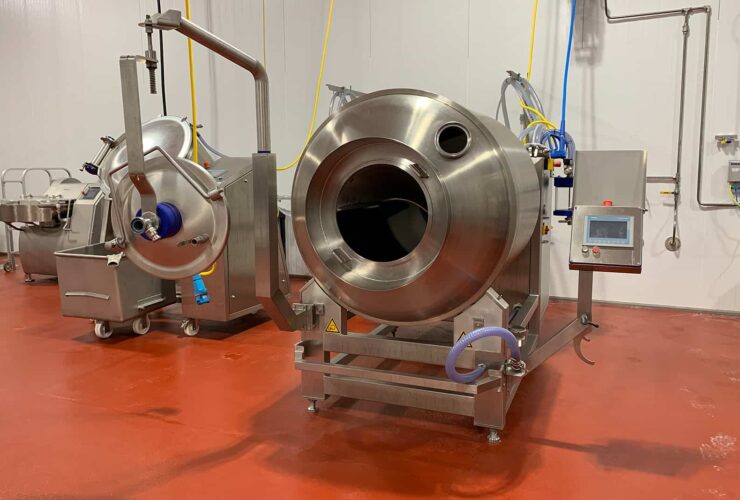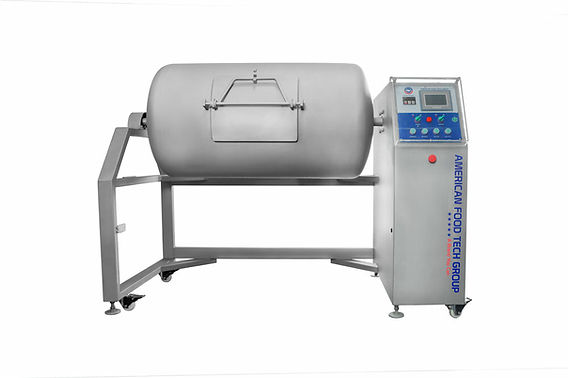10 years of experience as a food machinery equipment manufacturer
10 years of experience as a food machinery equipment manufacturer
The meat processing industry relies heavily on specialized equipment to ensure product quality, consistency, and safety. Among the most crucial pieces of machinery are meat vacuum tumblers. Factories dedicated to the design and production of these tumblers play a pivotal role in advancing how meat products are prepared, marinated, and enhanced on a commercial scale. These facilities are centers of engineering, material science, and food processing knowledge, contributing significantly to the efficiency and output of meat businesses worldwide.

At its heart, a meat vacuum tumbler is a machine designed to improve the characteristics of meat products through a combination of mechanical action and a controlled vacuum environment. The process involves placing meat – be it poultry, beef, pork, or seafood – into a rotating drum. As the drum tumbles, the meat is gently massaged. Simultaneously, a vacuum is drawn, which expands the muscle fibers of the meat. This expansion allows marinades, brines, spices, and other functional ingredients to penetrate the meat more deeply and evenly than traditional soaking methods.
The benefits are manifold: enhanced flavor absorption, improved tenderness, increased product yield due to better moisture retention, and more consistent product quality. Factories specializing in these machines focus on optimizing every aspect of this process, from the drum’s design to the precision of the vacuum system.
A meat vacuum tumbler factory is more than just an assembly line; it’s a complex operation that integrates several key disciplines:
Factories strive to differentiate their products and meet diverse customer needs by focusing on several critical aspects:
Hygienic Design: Machines are engineered for easy and thorough cleaning to prevent microbial contamination. This involves smooth, polished surfaces, crevice-free welds, and designs that allow for easy access to all parts.
Efficiency and Performance: This relates to the speed of marination, the evenness of ingredient distribution, and the ability to achieve consistent vacuum levels. The design of internal baffles or flights within the drum is crucial for optimal tumbling action – gentle enough to avoid damaging the meat, yet effective in exposing all surfaces.
Durability and Reliability: Meat processing environments can be demanding. Tumblers are built to withstand rigorous daily use, with robust frames, high-quality motors, and durable vacuum components.
Capacity and Scalability: Factories typically offer a range of tumbler sizes, from smaller units suitable for butcher shops or restaurants to massive industrial machines capable of processing thousands of kilograms of meat per batch.
Safety Features: Operator safety is a priority. Machines incorporate features like emergency stops, safety interlocks on loading doors, and guards for moving parts.
Automation and Customization: Increasingly, factories offer options for automated loading and unloading systems, integration with plant-wide control systems, and custom modifications to suit specific product types or processing line configurations.

The output of a meat vacuum tumbler factory directly influences the capabilities of meat processors. Access to reliable, efficient tumblers allows businesses to:
Innovation in this sector continues. Factories are exploring advancements such as:
In conclusion, meat vacuum tumbler factories are essential partners to the global meat industry. Through their commitment to engineering excellence, quality manufacturing, and continuous innovation, they provide the critical tools that enable meat processors to meet consumer demand for flavorful, tender, and high-quality meat products. The machinery developed within these facilities represents a blend of robust mechanical engineering and sophisticated process control, fundamentally shaping the way meat is prepared for markets around the world.
